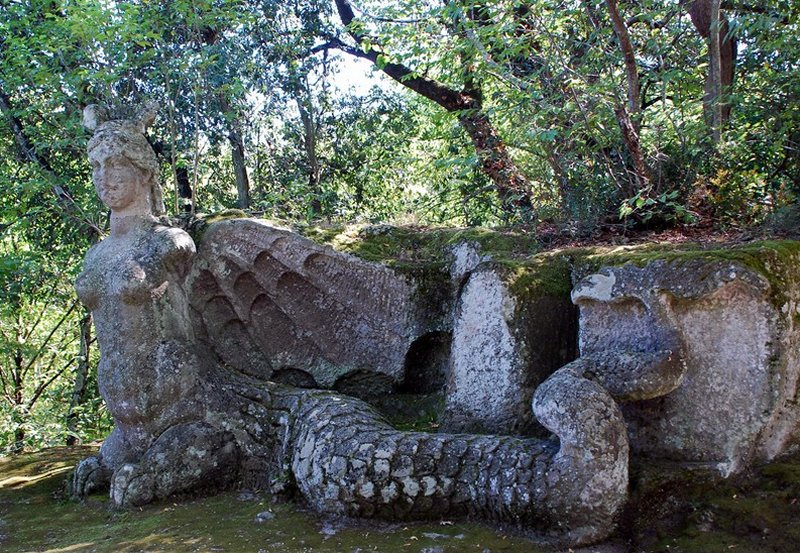Echidna – Mother Of All Monsters – A Cave-Dwelling Female Hybrid Creature In Greek Mythology
A. Sutherland - AncientPages.com - In Graeco-Roman tradition, the Echidna is a gigantic half-woman and half-snake hybrid creature. As a tall, full of charm, and beautiful woman from the waist below, she was a hideous serpent.
Echidna. Parco dei Mostri - Bomarzo, Italy. Image credit: Daderot – Public Domain
In other words, Echidna—described by Hesiod as an 'impossible monster'—is a remarkable creature and the mother of a pantheon of spirits with a fierce temperament. These spirits, among many other monstrous spirits, represented dark forces. These forces were created in the earliest times of the violent wars conducted by the gods. Some of these creatures survived the conflicts and continued to haunt and seriously endanger humans.
Echidna was an offspring of the primal gods Gaia and Tartarus (or Chrysaor and Callirhoe). Echidna never aged, but she was not immortal. She was a proud mother of many terrifying children with her brother and husband, Typhoon. She represented the corruption of the earth, decay, and disease.
One of them was Hydra, and others like Cerberus (Kérberos), the two-headed hound Orthos, who guarded Geryon's cattle and was killed by Heracles, the goat/lion/serpent Chimera, the Nemean Lion, the Sphinx, and the Eagle that ate Prometheus's liver.
Yet another extraordinary and frightening child of hers was the Griffin Vulture, a monstrous bird from Graeco-Roman mythology, and most probably Ladon, the many-headed, watchful, dragon-like serpent that guarded the Golden Apples of the Hesperides, the sacred garden.
The daughter of an Echidna, Hydra. Image credit: Yellow.Cat from Roma, Italy - CC BY 2.0
According to Pindar (Pindarus), c. 518 - 438 BC, an ancient Greek lyric poet from Thebes, Echidna gnawed into the light from her mother's womb. She lived in a cavern close to the land of Scythia, and usually, she emerged, showing only her human parts to attract human males. Once she had captured her victims, she would quickly embrace them in her serpentine coils and consume them.
According to Herodotus, Greeks living in Pontus, a region on the southern coast of the Black Sea, told a story of an encounter between Heracles, the son of Zeus and a divine hero in Greek mythology, and this snaky female creature. Heracles drove Geryones' cattle through the area, which would later become Scythia. One morning, he awoke and discovered that his horses had vanished. While searching for them, he "found a creature of double form in a cave that was half maiden and half serpent."
She had the horses and promised to return them if Heracles would have sex with her. Heracles agreed, and she had three sons with him: Agathyrsus, Gelonus, and Scythes. She asked Heracles what she should do with his sons: "shall I keep them here (since I am the queen of this country), or shall I send them away to you?"
Heracles gave her a bow and belt and told her that when the boys were grown, whoever would draw the bow and wear the belt would keep him and banish the others. The youngest son, Scythes, fulfilled the requirements and became the founder of the Scythians.
Death Of Echidna
Many versions of the myths are associated with Echidna, known as the "mother of all monsters." One says Hercules, Bellerophon, or Oedipus killed her. According to another, she was strangled in her sleep by Argos Panoptes, a giant with a hundred (or three hundred) eyes who was Hera's servant.
Credit: MalchevAdobe Stock -
The killing of the serpent-legged monster Echidna as she slept in her cave was believed to be Argos' Great achievement for the Olympian pantheon.
According to another story, Echidna was immortal. Zeus left her on earth after the victory over the Titans so that she and her descendants could later challenge heroes, according to Hesiod ('he, who emits the voice'), an ancient Greek poet who flourished c. 700 BC.
Most myths and legends about Echidna do not focus on her but on her famous and horrible monster children.
As told in the Iliad, the hero Bellerophon was ordered by the king of Lycia to kill the Chimera. The truth is that the king wanted Bellerophon to kill rather than the Chimera, but the hero, whom the gods miraculously protected, succeeded in killing Echidna's monster-child, Chimera, whom Bellerophon shot with an arrow.
Written by – A. Sutherland - AncientPages.com Senior Staff Writer
Updated on March 28, 2024
Copyright © AncientPages.com All rights reserved. This material may not be published, broadcast, rewritten or redistributed in whole or part without the express written permission of AncientPages.com
Expand for referencesReferences:
Goldstein J. 101 Amazing Mythical Beasts
Routledge, Handbook of Greek Mythology
Bane T. Encyclopedia of Beasts and Monsters in Myth, Legend and Folklore
More From Ancient Pages
-
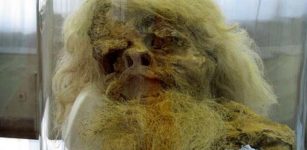 Mystery Of The 1,700-Year-Old ‘Salt’ Mummy With Long White Hair
Featured Stories | Sep 14, 2016
Mystery Of The 1,700-Year-Old ‘Salt’ Mummy With Long White Hair
Featured Stories | Sep 14, 2016 -
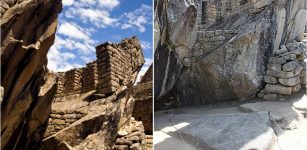 Unique Temple Of The Condor In Machu Picchu: 3D Spectacular Inca Stonemasonry
Civilizations | Sep 21, 2016
Unique Temple Of The Condor In Machu Picchu: 3D Spectacular Inca Stonemasonry
Civilizations | Sep 21, 2016 -
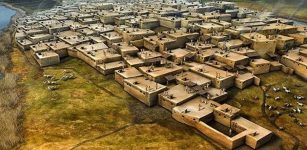 Mysterious Ancient Site Of Çatalhöyük: Remains Of Early Structures May Shed More Light On Its Obscure Past
Archaeology | Apr 11, 2017
Mysterious Ancient Site Of Çatalhöyük: Remains Of Early Structures May Shed More Light On Its Obscure Past
Archaeology | Apr 11, 2017 -
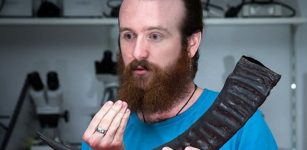 3D-printed replica of an artefact revives music of Iron-Age Ireland
News | Sep 4, 2015
3D-printed replica of an artefact revives music of Iron-Age Ireland
News | Sep 4, 2015 -
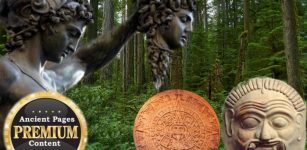 The Aztec Sun Stone And Medusa Reveal An Intriguing Connection – A Different Gorgon And Strange Location – Part 2
Civilizations | Aug 1, 2018
The Aztec Sun Stone And Medusa Reveal An Intriguing Connection – A Different Gorgon And Strange Location – Part 2
Civilizations | Aug 1, 2018 -
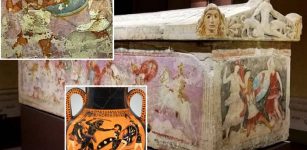 Sarcophagus Of The Amazons: Etruscan Coffin With Paintings Of Dynamic Fighting Scenes Of Greeks With Amazons
Featured Stories | Oct 18, 2022
Sarcophagus Of The Amazons: Etruscan Coffin With Paintings Of Dynamic Fighting Scenes Of Greeks With Amazons
Featured Stories | Oct 18, 2022 -
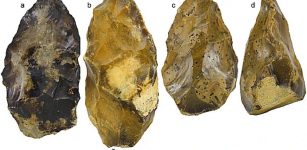 Northern France Was Already Inhabited More Than 650,000 Years Ago
Archaeology | Sep 18, 2019
Northern France Was Already Inhabited More Than 650,000 Years Ago
Archaeology | Sep 18, 2019 -
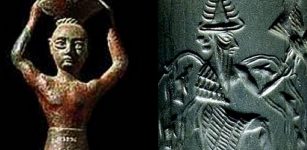 Nammu: Sumerian Goddess Who Got The Idea To Create Mankind In The Image Of Gods
Featured Stories | Apr 1, 2019
Nammu: Sumerian Goddess Who Got The Idea To Create Mankind In The Image Of Gods
Featured Stories | Apr 1, 2019 -
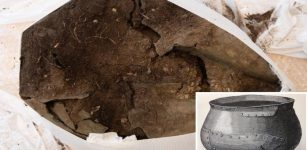 Rare Ancient Roman Cauldron Discovered In Central Norway
Archaeology | Sep 16, 2019
Rare Ancient Roman Cauldron Discovered In Central Norway
Archaeology | Sep 16, 2019 -
 Unusual Secret May Be Hidden In A Mysterious Valley In The American Southwest
Featured Stories | Jan 30, 2024
Unusual Secret May Be Hidden In A Mysterious Valley In The American Southwest
Featured Stories | Jan 30, 2024 -
 Explorer Discovered A Lost Underground World Beneath Big Sur In North America – But Why Cannot Anyone Else Find It Now?
Featured Stories | Feb 12, 2019
Explorer Discovered A Lost Underground World Beneath Big Sur In North America – But Why Cannot Anyone Else Find It Now?
Featured Stories | Feb 12, 2019 -
 On This Day In History: Twelfth Council Of Toledo Initiated By King Erwig – On Jan 9, 681
News | Jan 9, 2017
On This Day In History: Twelfth Council Of Toledo Initiated By King Erwig – On Jan 9, 681
News | Jan 9, 2017 -
 Mount Ararat Was Once Located By The Sea – Study Of Palm Leaves Reveals
Archaeology | Jul 18, 2020
Mount Ararat Was Once Located By The Sea – Study Of Palm Leaves Reveals
Archaeology | Jul 18, 2020 -
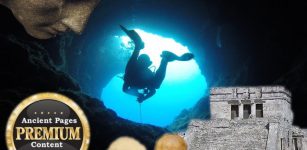 Baffling North American Ancient Skulls Contradict Historical Timelines And Mainstream Theories
Featured Stories | Jun 11, 2020
Baffling North American Ancient Skulls Contradict Historical Timelines And Mainstream Theories
Featured Stories | Jun 11, 2020 -
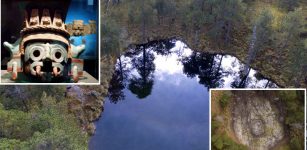 Tetzacualco – Mesoamerican Mini Model Of The Universe Discovered Underwater
Archaeology | Jan 4, 2018
Tetzacualco – Mesoamerican Mini Model Of The Universe Discovered Underwater
Archaeology | Jan 4, 2018 -
 Mississippi’s Mounds Built By The Indigenous People Are Incredibly Important Landforms – Scientists Say
Archaeology | Jul 25, 2023
Mississippi’s Mounds Built By The Indigenous People Are Incredibly Important Landforms – Scientists Say
Archaeology | Jul 25, 2023 -
 Scientists Say Dinosaurs Could Be The Reason Humans Can’t Live For 200 Years
Featured Stories | Jan 8, 2024
Scientists Say Dinosaurs Could Be The Reason Humans Can’t Live For 200 Years
Featured Stories | Jan 8, 2024 -
 DNA Evidence Ice Age Humans Migrated From China To The Americas And Japan
DNA | May 9, 2023
DNA Evidence Ice Age Humans Migrated From China To The Americas And Japan
DNA | May 9, 2023 -
 Underground Civilizations – Secret Subterranean Corridors And Strange People – Part 2
Civilizations | May 10, 2019
Underground Civilizations – Secret Subterranean Corridors And Strange People – Part 2
Civilizations | May 10, 2019 -
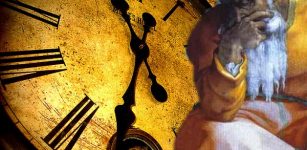 Did Ancient Civilizations Possess Knowledge Of Time Travel?
Ancient Technology | Sep 17, 2018
Did Ancient Civilizations Possess Knowledge Of Time Travel?
Ancient Technology | Sep 17, 2018


